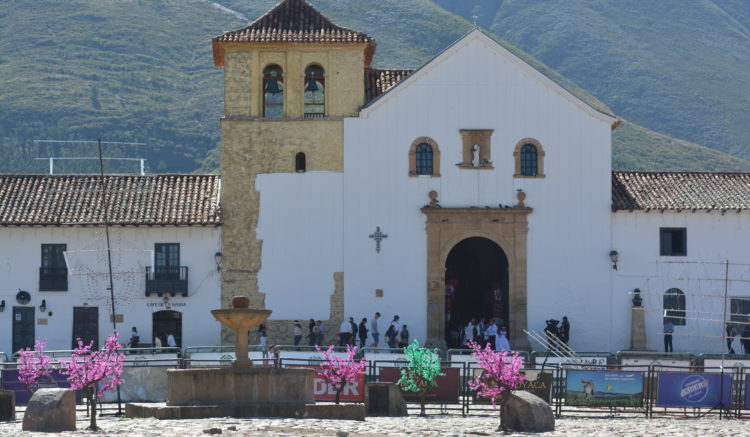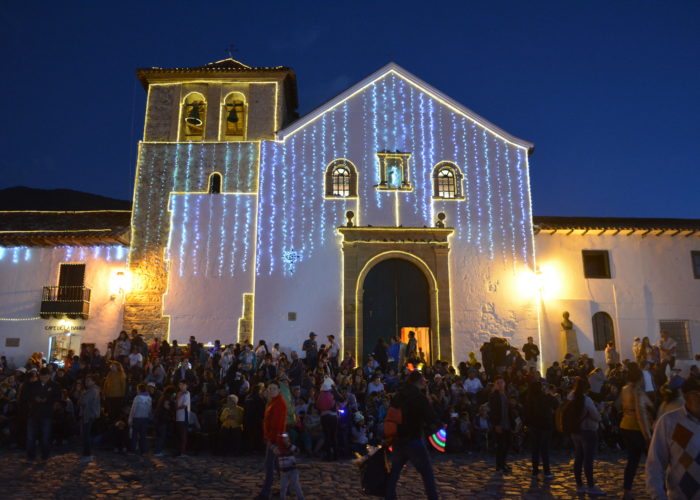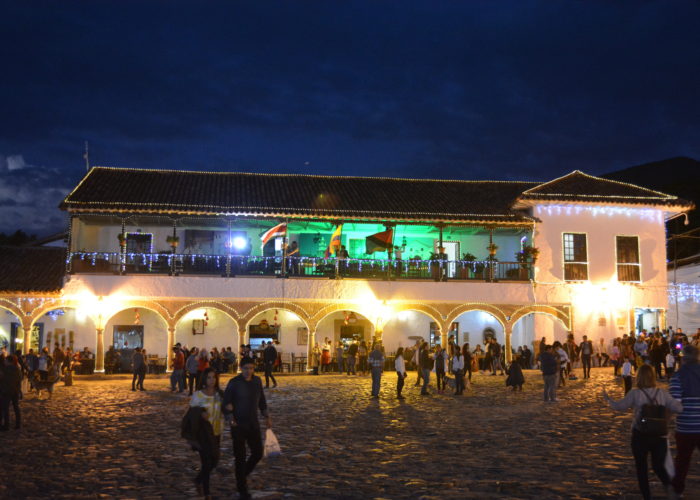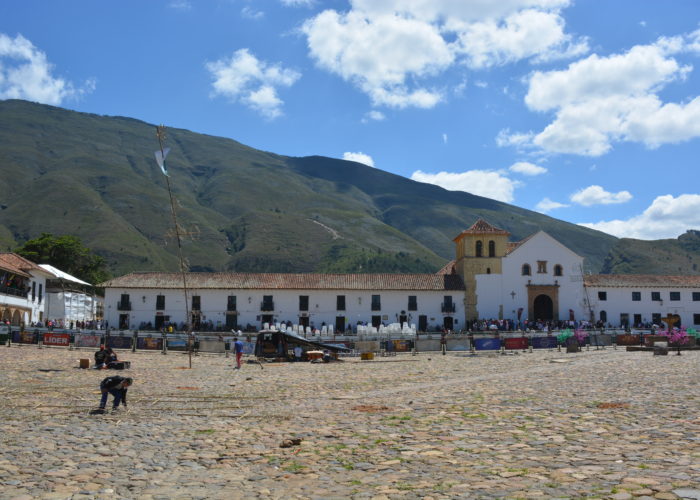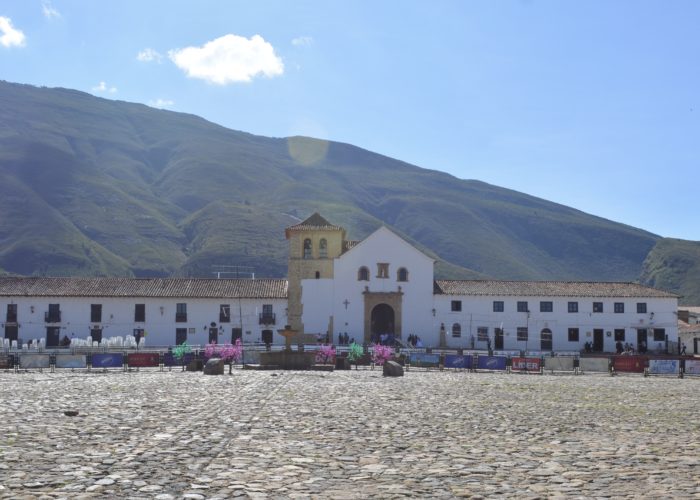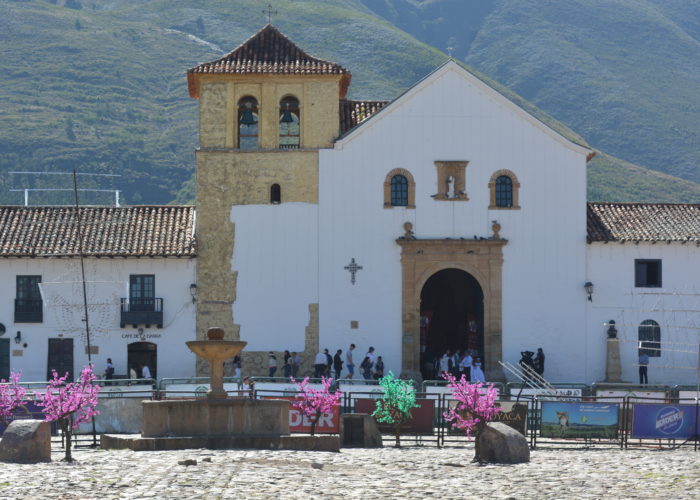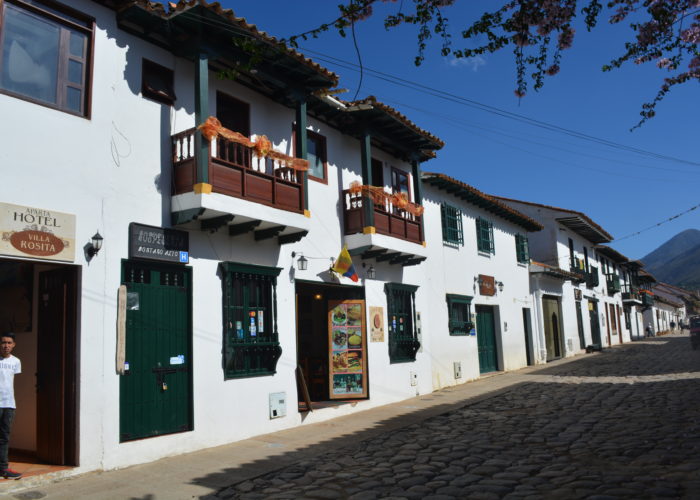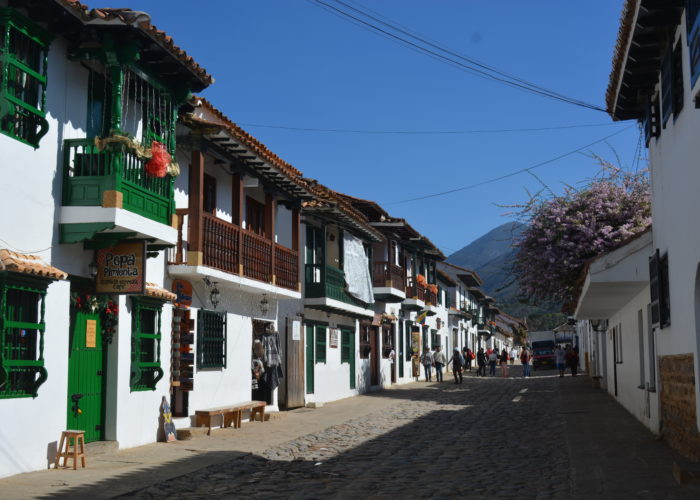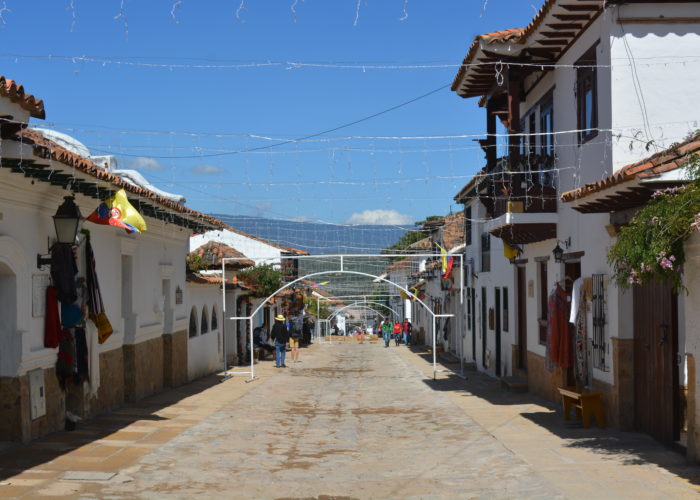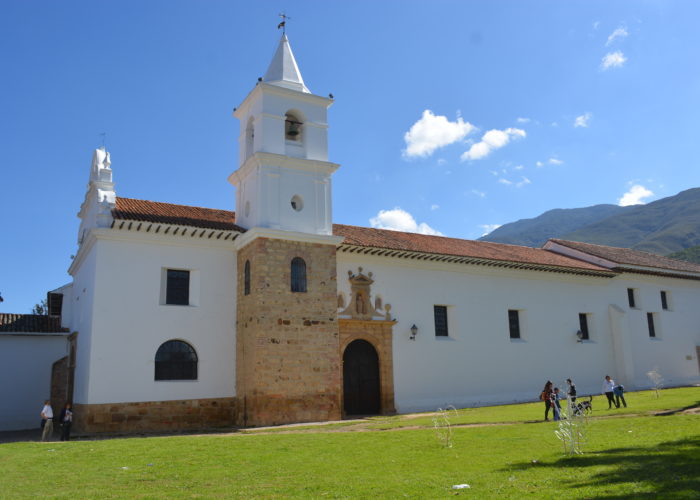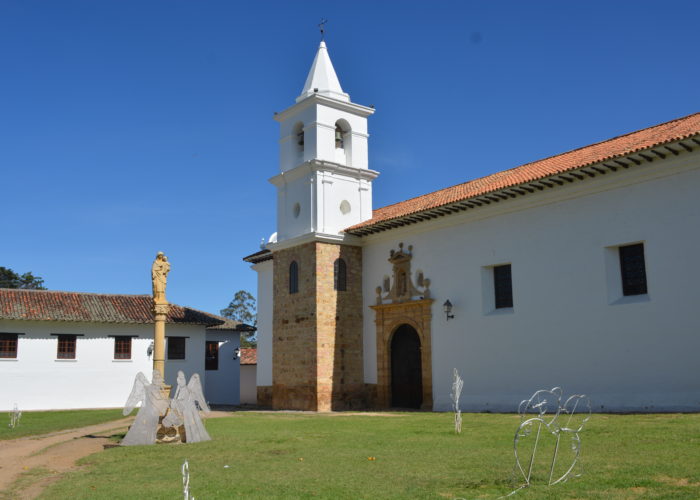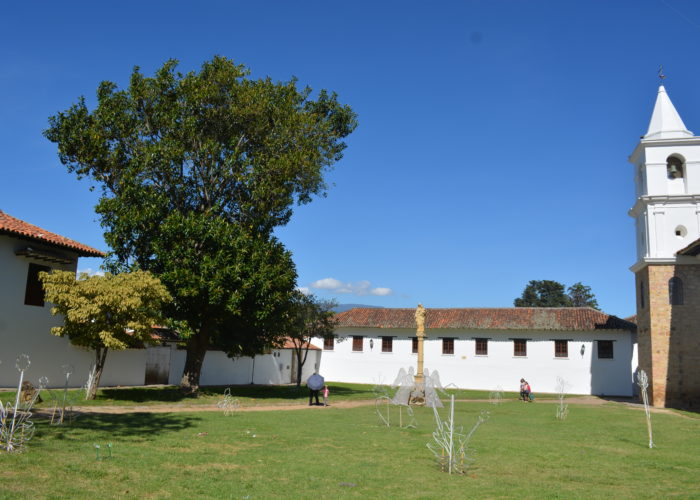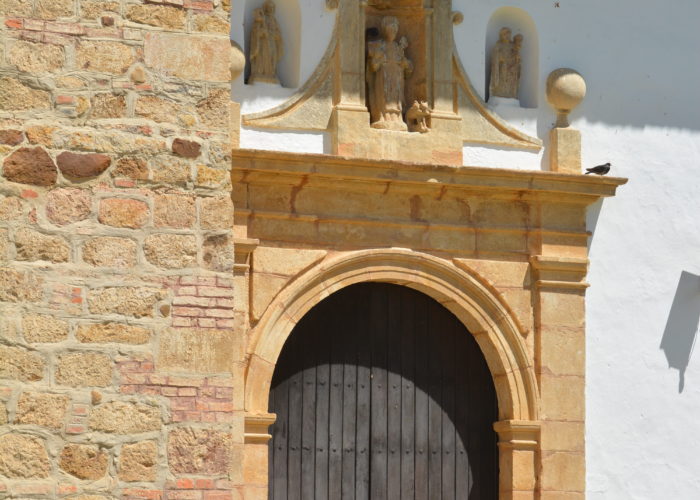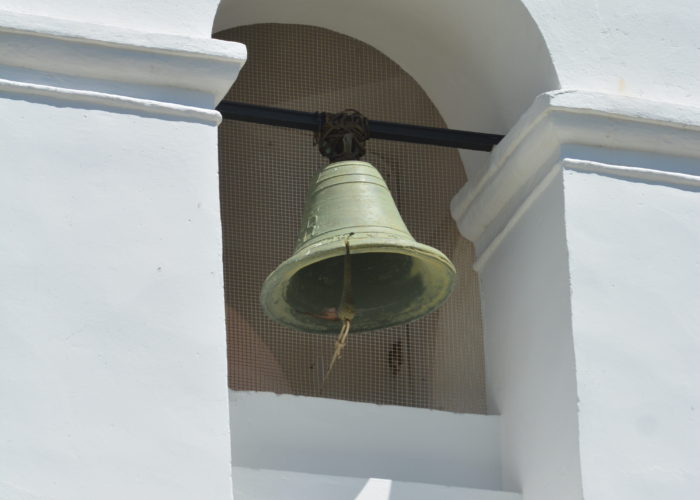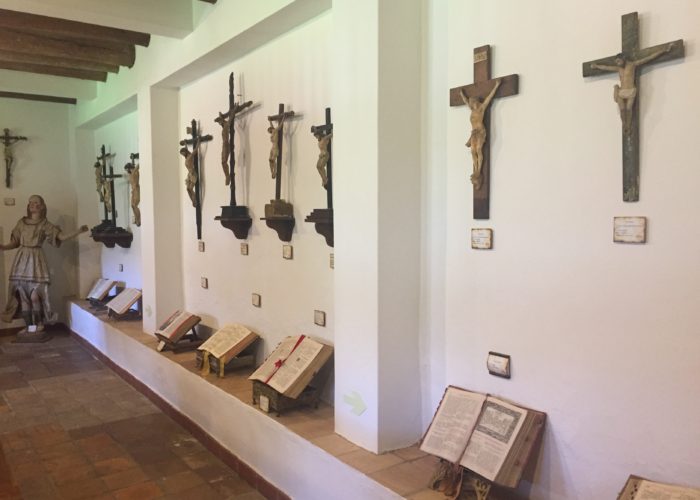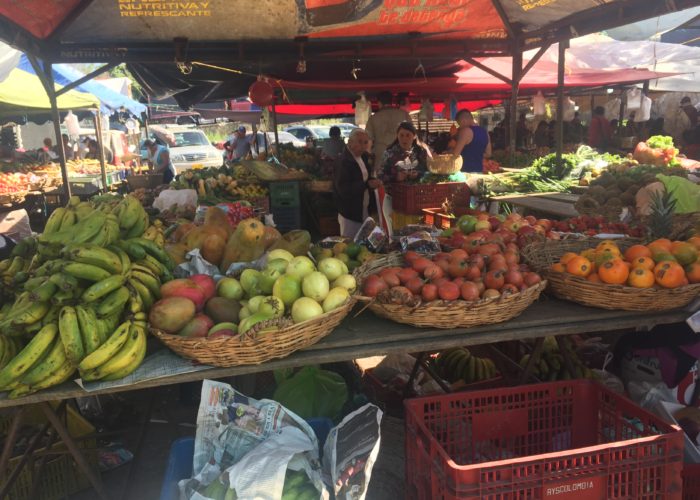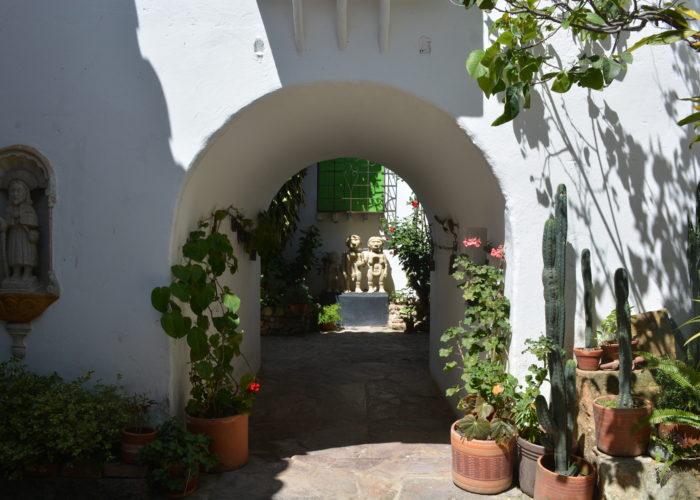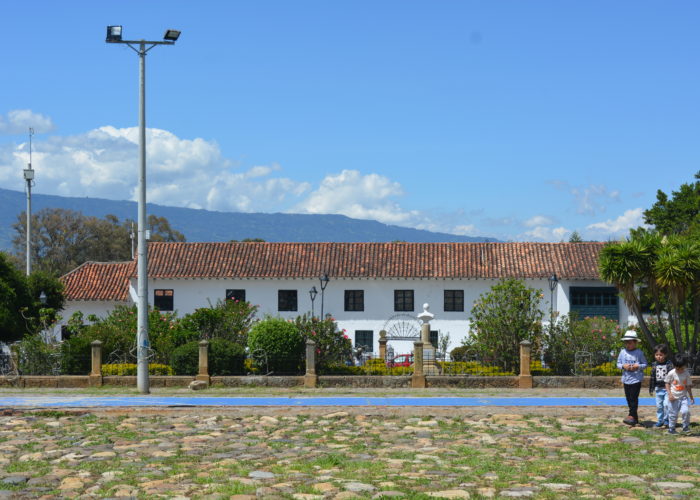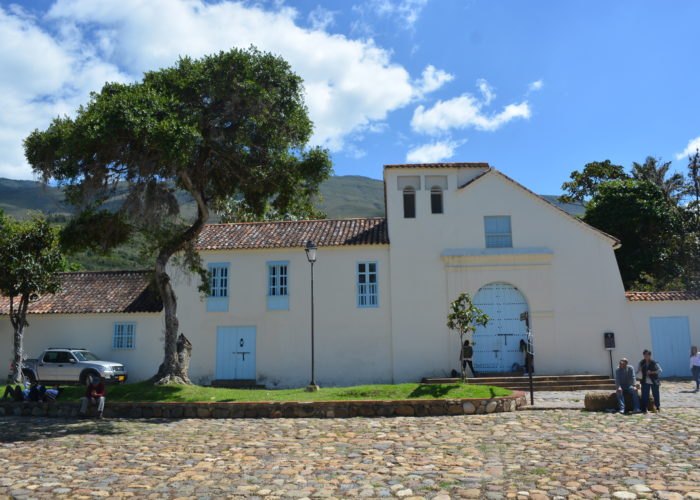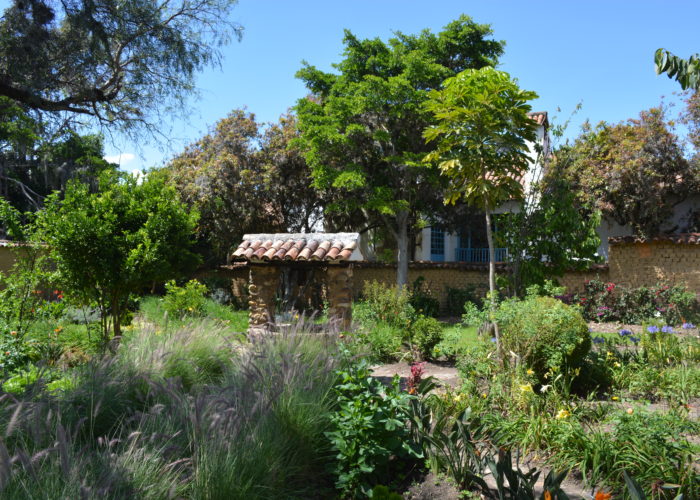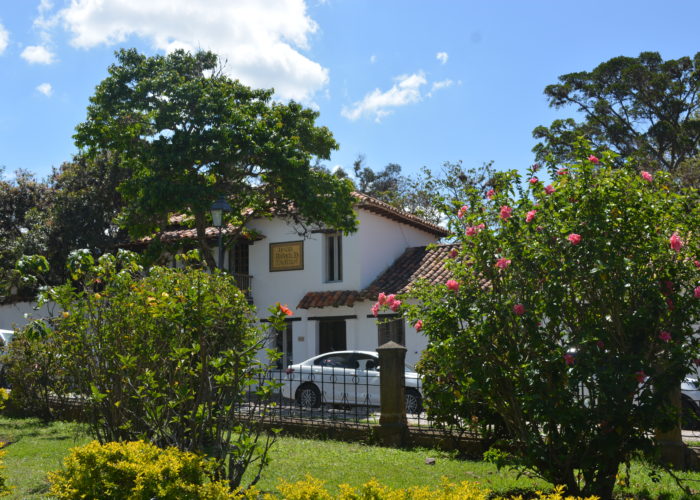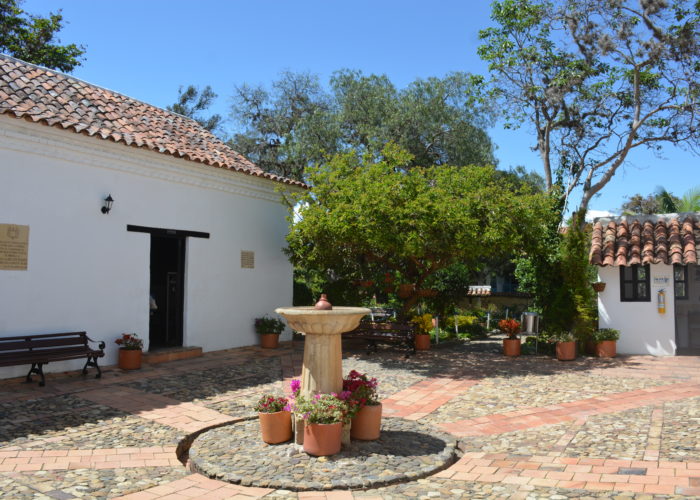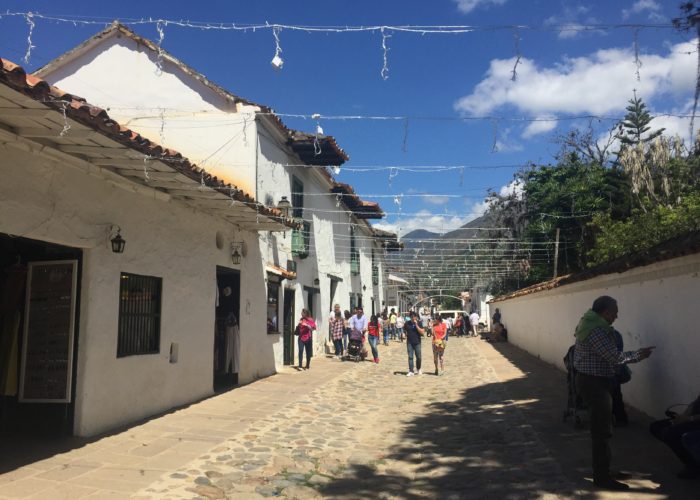Villa de Leyva (also spelled “Villa de Leiva”) is a beautifully preserved colonial town located in the Boyacá Department, about 163 km north of Bogotá. Founded in 1572 by Hernán Suárez de Villalobos, Villa de Leyva remains one of the best-preserved colonial towns in Colombia, attracting both domestic and international tourists. With a population of around 16,000, the town is especially popular with visitors from Bogotá, offering a glimpse into the past with its whitewashed buildings, cobbled streets, and grand public squares. Though not as commercialised as other tourist hubs like Cartagena, it has become a favourite for weekend escapes, particularly among Colombia’s burgeoning middle class.
On our first visit in 2018, we stayed at the Vila Gaddiel, a beautiful hotel located close to the town centre. On our return in 2022, the Vila Gaddiel had not yet reopened post-COVID, so we stayed at Hotel Andres Venero, a lovely hacienda-style hotel on the edge of town with beautiful gardens and balconies.
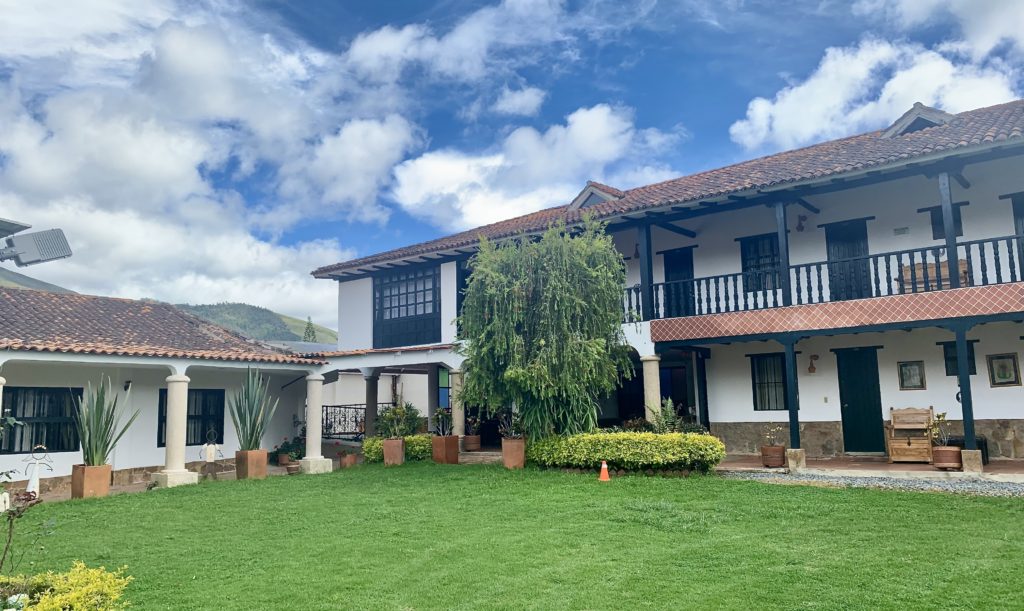
Geography & Climate
Villa de Leyva is situated at an altitude of about 2,140 metres (7,020 feet) above sea level, nestled in the valley of the Eastern Cordillera of the Andes. Surrounded by mountains, it enjoys a relatively mild climate with average temperatures ranging between 14°C and 20°C (57°F to 68°F) year-round. Rainfall is moderate, with a wetter season between April and November. The fertile land around the town supports agriculture and cattle farming, which have long been important to the local economy. The landscape is lush and green, in stark contrast to the arid areas in some other parts of Colombia’s interior.
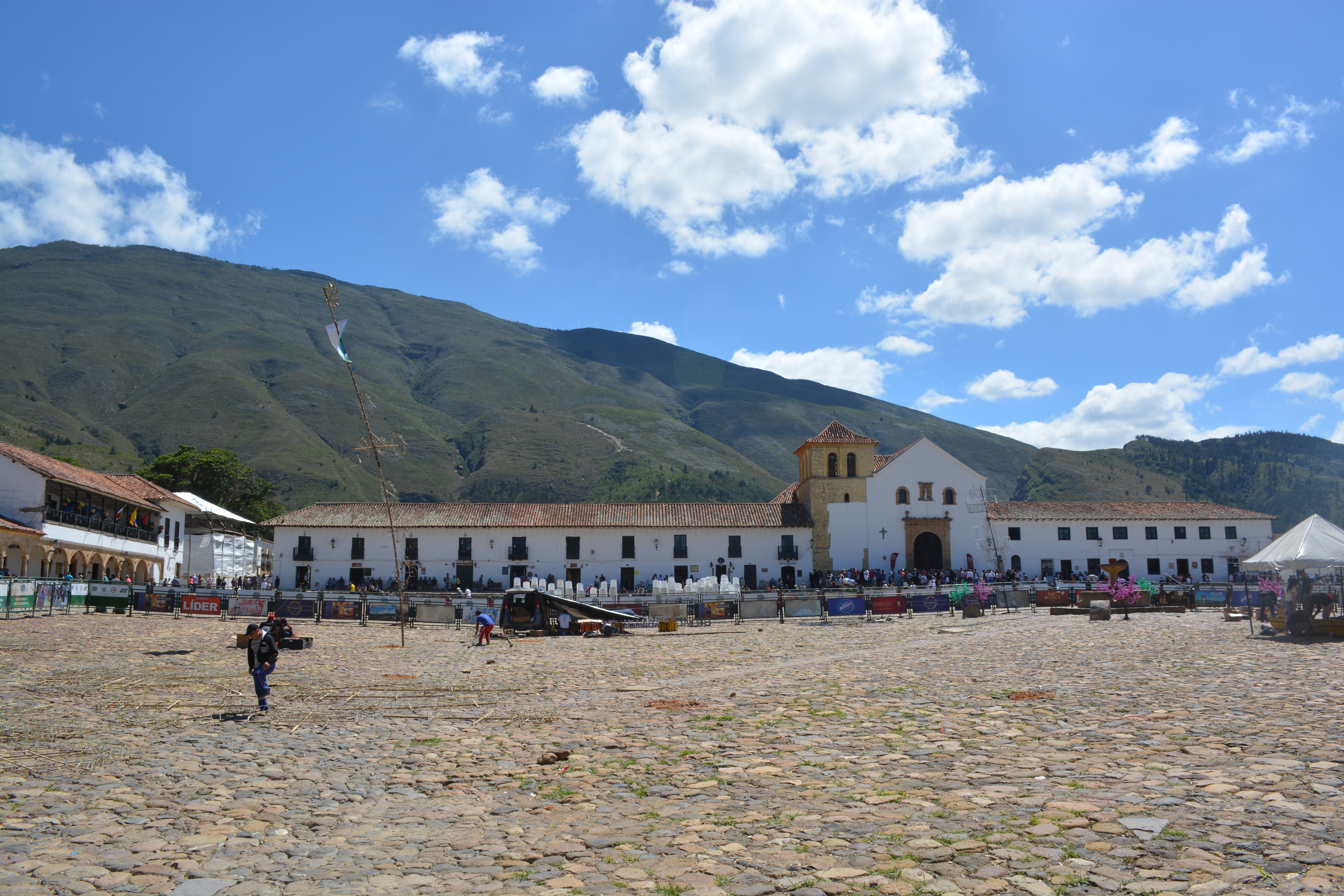
History & Economy
Villa de Leyva was founded in 1572 by the Spanish colonists and was named after the first president of the New Kingdom of Granada, Andrés Díaz Venero de Leyva. It quickly became a prominent market town, supporting nearby agricultural communities and serving as a military and administrative centre. The town and its citizens played a significant role in Colombia’s struggle for independence, producing several national heroes who fought alongside Simón Bolívar. The town is the birthplace of Antonio Ricaurte, one of Colombia’s national heroes, who famously sacrificed his life during the war of independence, turning the tide in favour of the Bolivarians.
Today, Villa de Leyva is a key tourist destination, known for its well-preserved colonial heritage and a variety of cultural festivals, such as the annual kite festival in August. The local economy is heavily dependent on tourism, but the surrounding area also benefits from agriculture, producing dairy, grains, and Colombia’s famous cut flowers.
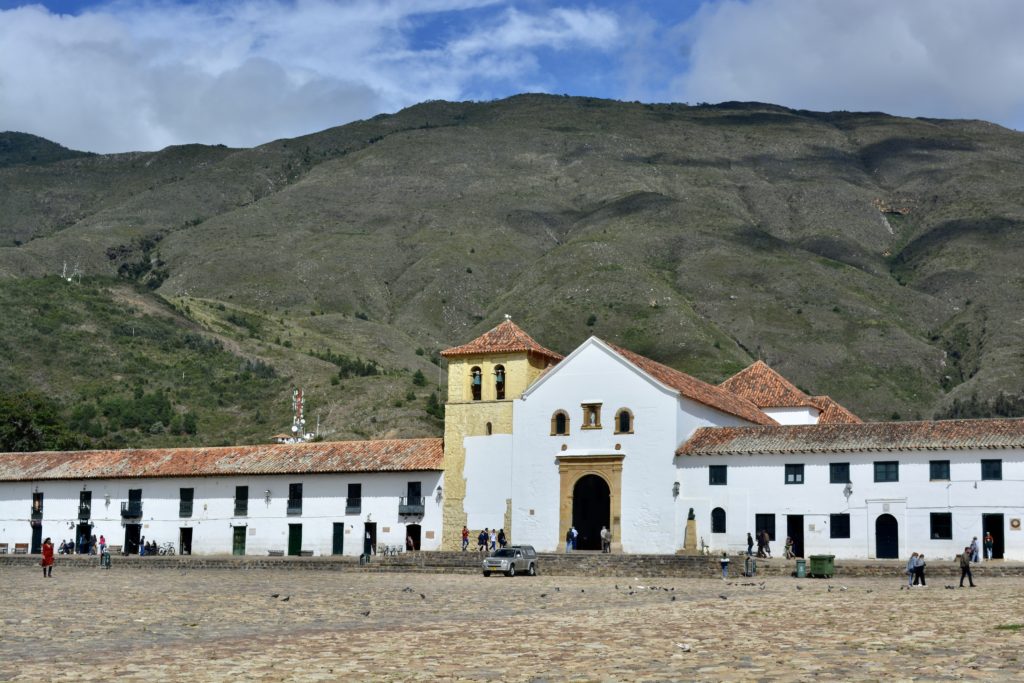
Principal Sites
Plaza Mayor
At the heart of Villa de Leyva is the Plaza Mayor, an expansive cobblestone square measuring 14,000 square metres, making it the largest town square in Colombia. The square is surrounded by impeccably preserved two-storey, whitewashed colonial buildings, many with balconies. In the centre of the square stands an old well, a relic from the town’s early days when it served as the main source of water.
Festival of Lights at Plaza Mayor
Much of Villa de Leyva’s life centres on Plaza Mayor, and our visit coincided with the annual Festival of Lights. On both Friday and Saturday nights, the square was transformed with nearly two-hour-long firework displays, drawing enormous crowds. Despite the vast 14,000 square metres of the square, it wasn’t enough to accommodate the throngs of visitors, resulting in a lively and somewhat chaotic crush of humanity. Yet, in typical Colombian fashion, the atmosphere remained good-natured. On Friday, the less crowded of the two nights, many attendees brought multicoloured wax candles, which they lit in clusters, leaving beautiful but large residues of wax on the ancient cobblestones. This tradition adds a unique, vibrant touch to the festivities, creating a mesmerising sight across the plaza.
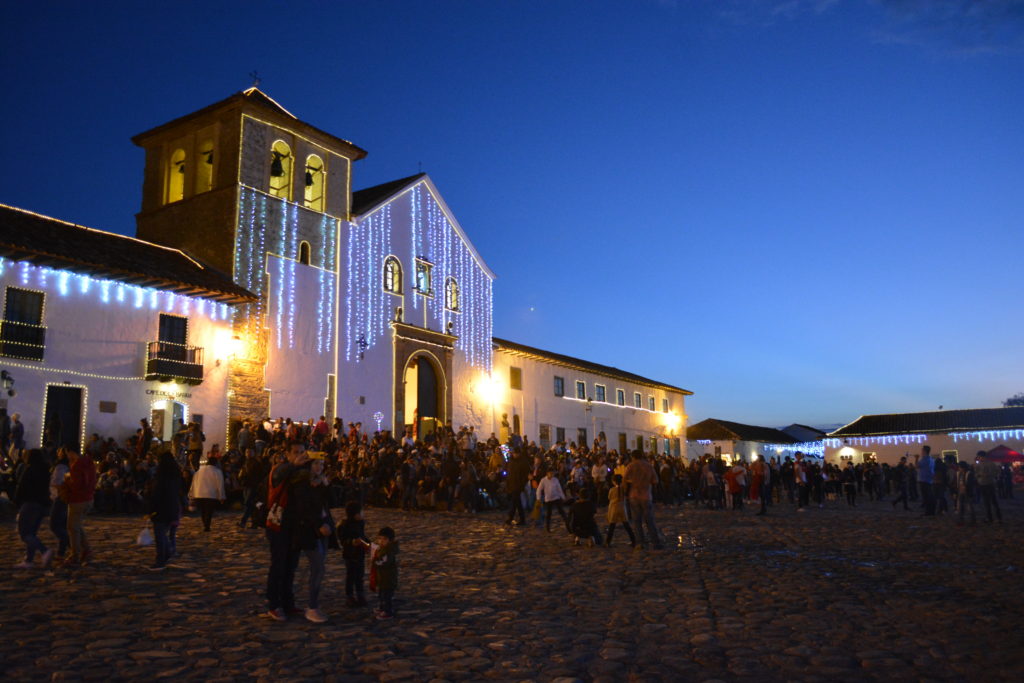
Iglesia de Nuestra Señora del Rosario
Dominating one side of the Plaza Mayor is the Iglesia de Nuestra Señora del Rosario, a beautiful church dating back to the 17th century. The church is simple yet elegant, with a white façade that blends in with the rest of the town’s architecture. Inside, it retains some original features, providing a glimpse into Colombia’s colonial religious heritage. Weddings and funerals are frequently held here, and on weekends, the plaza fills with visitors posing for photos, adding to the bustling atmosphere of the town.
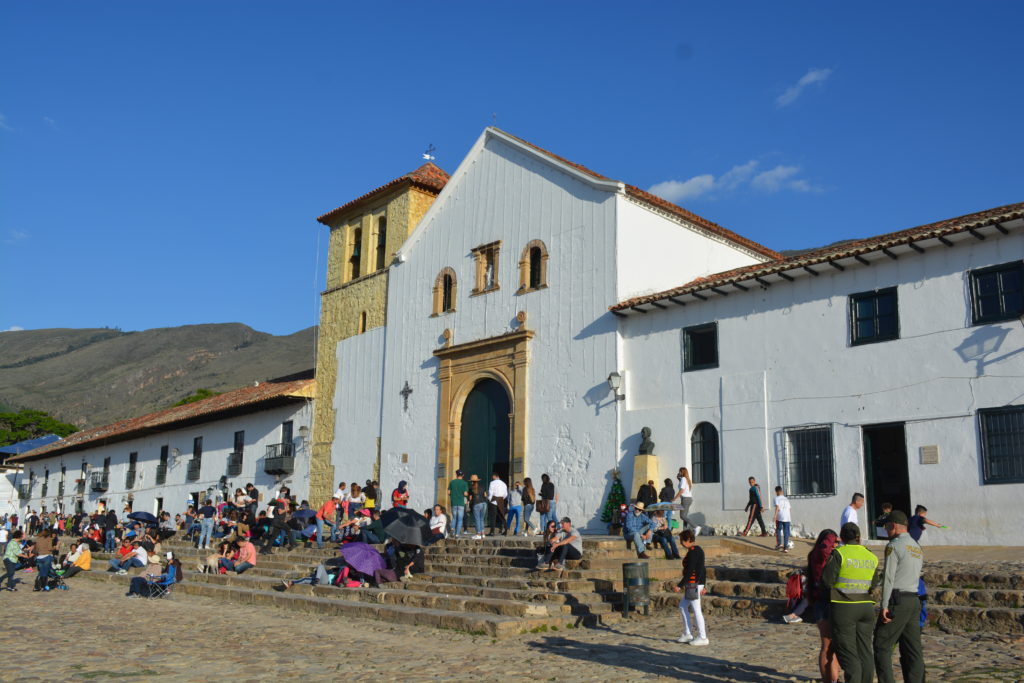
Casa de Antonio Ricaurte
A short walk from the Plaza Mayor is the Casa de Antonio Ricaurte, the birthplace of Colombia’s revolutionary hero. The house has been transformed into a museum showcasing colonial architecture and artefacts from the independence era. The manicured gardens, maintained to reflect the Spanish colonial style, are an attractive feature. The museum commemorates Ricaurte’s heroic act of blowing up the Spanish forces during a critical moment in the war of independence.
Monasterio de las Carmelitas
The Monasterio de las Carmelitas, located just a block from the Plaza Mayor, is another key historical site. Today, the monastery houses one of Colombia’s largest collections of religious art. The collection includes numerous austere paintings and sculptures, with an entire room dedicated to various forms of the cross. The square itself, with the elegant white church and peaceful courtyard, offers a quiet respite from the more crowded parts of town.
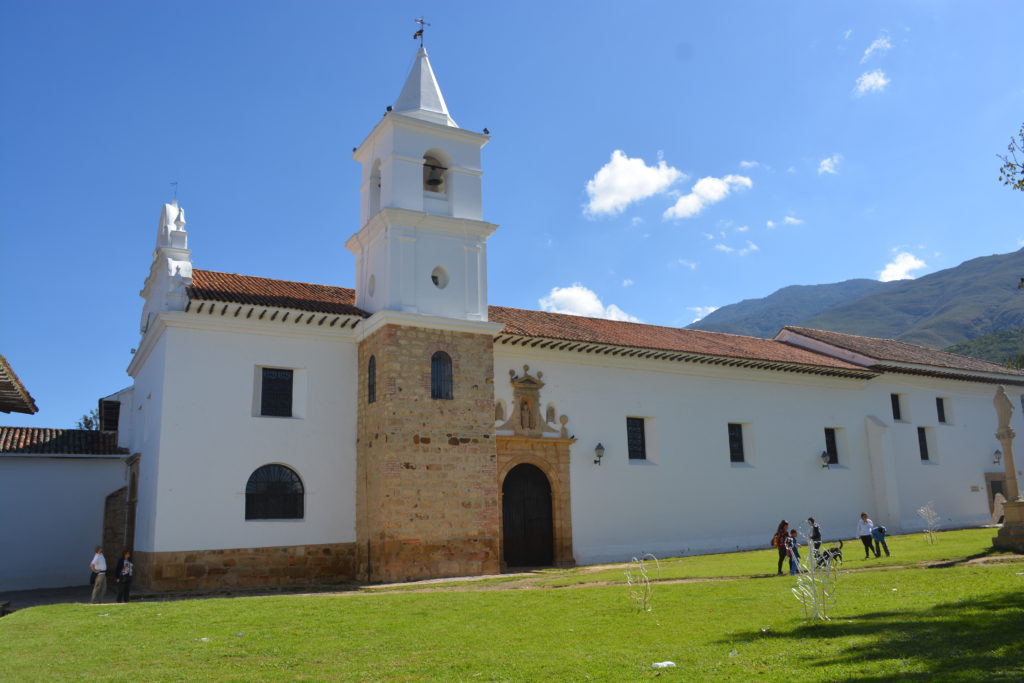
Casa Museo Luis Alberto Acuña
The Casa Museo Luis Alberto Acuña, located in the Plaza Mayor, was once home to the avant-garde artist Luis Alberto Acuña. The museum showcases Acuña’s bold and imaginative works, and the building itself is a colonial-era house with a stunning internal courtyard. The murals and vibrant plants in the courtyard offer a striking contrast to the more subdued colours of the town, providing visitors with a unique insight into modern Colombian art.

Food & Drink
Villa de Leyva offers a variety of excellent dining options. El Patio serves traditional Colombian cuisine in a cosy courtyard setting, while Mercado Municipal focuses on organic and farm-to-table dishes. miCocina is known for its creative fusion menu, blending Colombian ingredients with international flavours. For a relaxing coffee, head to Besos de Colibri, a charming café on the main square, where you can sip a cappuccino while watching the world go by. The café’s outdoor seating and tranquil atmosphere make it a perfect spot for people-watching and enjoying the laid-back vibe of Villa de Leyva.
BBC Bar at Casa Quintero
Located in a corner of Plaza Mayor, the BBC bar (Bogotá Beer Company) is one of Villa de Leyva’s best spots for sampling local craft beer. Housed in the historic Casa Quintero, the bar offers five of the brewery’s signature beers on tap and various bottled options. Its prime location and relaxed atmosphere make it a great place to unwind with a pint while enjoying views of the square.
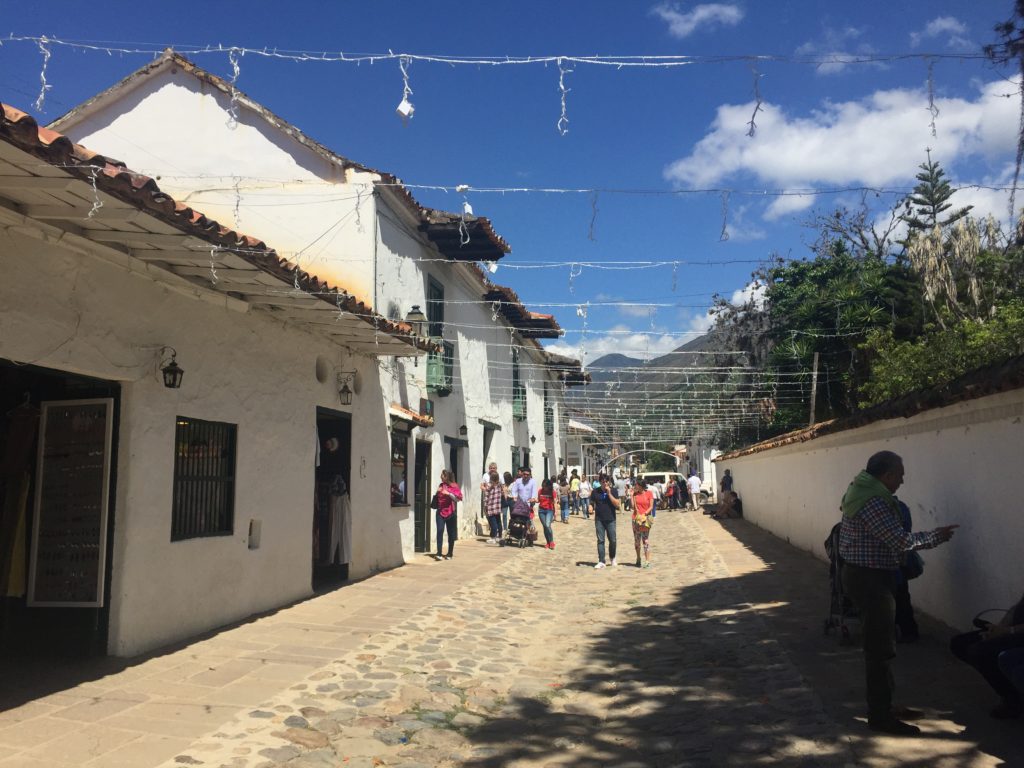
Environment
Villa de Leyva is situated in a region that enjoys a moderate climate due to its altitude, but the surrounding areas face environmental challenges typical of Andean ecosystems. Deforestation for agriculture, particularly cattle farming, has led to soil erosion in certain areas, while water management has become a concern due to changing rainfall patterns. Efforts have been made to conserve native plant species and protect the biodiversity of the region. The town itself, with its cobbled streets and colonial architecture, faces pressure from increasing tourism, which could threaten its charm if not managed sustainably.
Final Thoughts
Villa de Leyva stands as a living monument to Colombia’s colonial past, offering visitors an authentic experience of the country’s rich history and culture. Its peaceful plazas, well-preserved architecture, and stunning surroundings make it a must-visit destination. While tourism continues to play an increasingly important role in its economy, the town has so far managed to retain its authentic Colombian character, offering a genuine escape from the hustle and bustle of modern life. Whether you’re exploring the museums, enjoying a craft beer in Casa Quintero, or simply wandering the town’s streets, Villa de Leyva provides a unique and tranquil experience.
Dates: 07/12/2018 to 08/12/2018 &29/04/2022 to 01/05/2022
